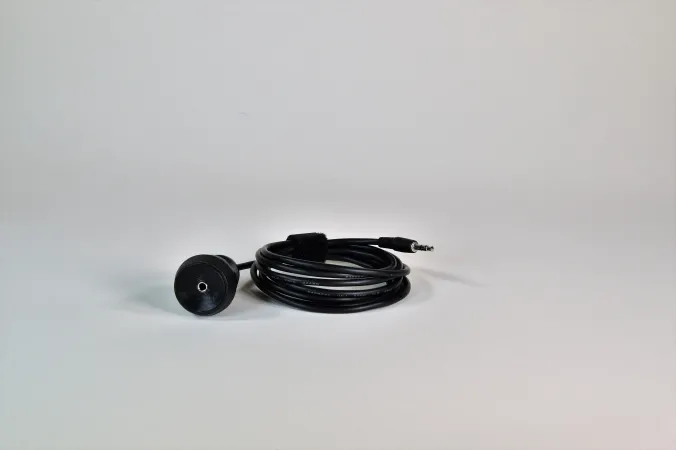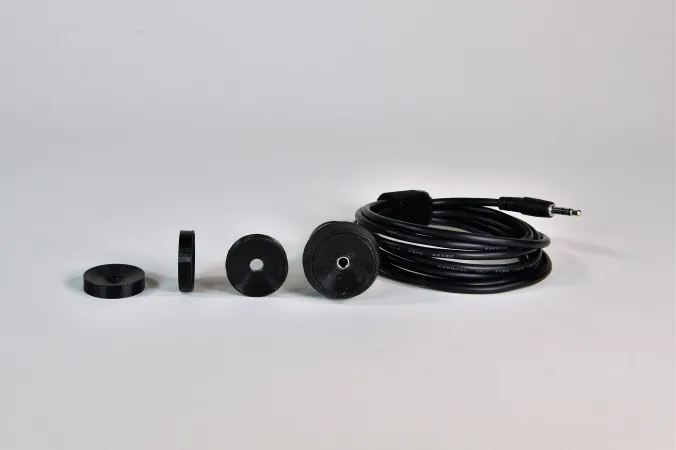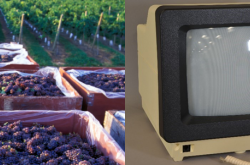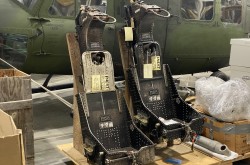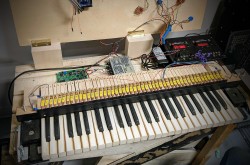How the Canada Science and Technology Museum designed an accessible, modular headphone jack
This article was originally written and submitted as part of a Canada 150 Project, the Innovation Storybook, to crowdsource stories of Canadian innovation with partners across Canada. The content has since been migrated to Ingenium’s Channel, a digital hub featuring curated content related to science, technology and innovation.
Accessible headphone jacks aren’t hard to find nowadays, but they’re always built into your average neighbourhood fixtures, like an ATM. This isn’t the most welcoming design since there’s no way to get the device as a standalone product. But the Canada Science and Technology Museum strives for inclusive design, and since they couldn’t buy an accessible headphone jack, their innovators decided to design their own.
These jacks are shaped in a way that makes inserting headphones into them much easier. Standard headphone jacks are 3.5mm in diameter. That’s pretty small, and for someone with a motor or visual impairment there’s quite a bit of dexterity and accuracy required.
The inspiration for this device came from the design of an accessible keypad and headphone jack found in the Canadian Museum for Human Rights. The accessible headphone jack was a custom design for their displays. So, the Canada Science and Technology new media officer, Andrew Macdonald, and director of digital media and technology, Chris Jaja, got to work on designing one. Macdonald and Jaja are part of CSTMC’s 3D Team.
They went to tool shops throughout Ottawa to buy parts and figure out how to come up with a straightforward and affordable accessible headphone jack. While these stores were very supportive – with Ottawa Fastener Supply taking a particular interest in their endeavor – they couldn’t come up with anything. That was until their drive back to the museum when they thought of a simple, yet innovative solution, that couldn’t exist outside of our modern times. They realized they could 3D print the jack.
The design for their accessible headphone jack consists of three parts: a 3D printed insert, a happ button and a 3.5mm headphone jack cable. The 3D printed insert that Macdonald and Jaja created is a concave disc. It’s depressed so that there’s an intuitive guidance for sliding in the headphones. Macdonald went through eight design revisions before settling on the final draft. He had to experiment with different dimensions by fractions of a millimeter to get the shape just right.
Happ buttons are standard buttons used everywhere. You can find them on museums displays, pinball machines, arcade cabinets and anywhere else you need a big easy-to-push switch. Integration of these parts isn’t complicated either. The 3D printed insert fits into the top part of the happ button as the user’s interface. A headphone jack cable is then plugged into the underside of the happ button to connect to the rest of the system.
Macdonald and Jaja didn’t have the most difficult time coming up with the design for this accessible interface because it’s all rather intuitive and easy to assemble. It’s made mostly of existing technology, but it does go to show the capacity for 3D printing and how it allows for creative solutions to problems.
By: Jassi Bedi



